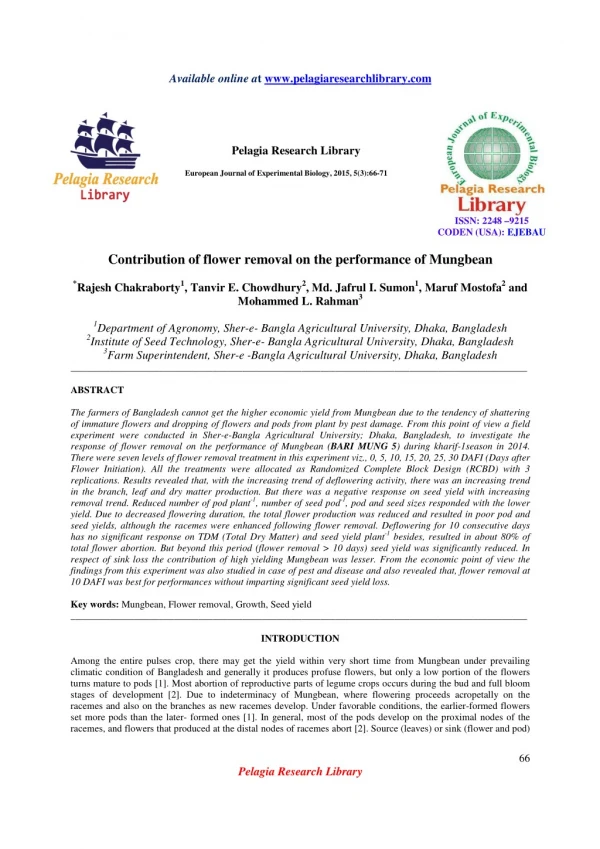Contribution of flower removal on the performance of Mungbean
The farmers of Bangladesh cannot get the higher economic yield from Mungbean due to the tendency of shattering of immature flowers and dropping of flowers and pods from plant by pest damage. From this point of view a field experiment were conducted in Sher-e-Bangla Agricultural University; Dhaka, Bangladesh, to investigate the response of flower removal on the performance of Mungbean (BARI MUNG 5) during kharif-1season in 2014. There were seven levels of flower removal treatment in this experiment viz., 0, 5, 10, 15, 20, 25, 30 DAFI (Days after Flower Initiation). All the treatments were allocated as Randomized Complete Block Design (RCBD) with 3 replications. Results revealed that, with the increasing trend of deflowering activity, there was an increasing trend in the branch, leaf and dry matter production. But there was a negative response on seed yield with increasing removal trend. Reduced number of pod plant-1, number of seed pod-1, pod and seed sizes responded with the lower yield. Due to decreased flowering duration, the total flower production was reduced and resulted in poor pod and seed yields, although the racemes were enhanced following flower removal. Deflowering for 10 consecutive days has no significant response on TDM (Total Dry Matter) and seed yield plant-1 besides, resulted in about 80% of total flower abortion. But beyond this period (flower removal> 10 days) seed yield was significantly reduced. In respect of sink loss the contribution of high yielding Mungbean was lesser. From the economic point of view the findings from this experiment was also studied in case of pest and disease and also revealed that, flower removal at 10 DAFI was best for performances without imparting significant seed yield loss.
★
★
★
★
★
87 views • 6 slides
